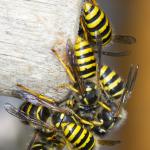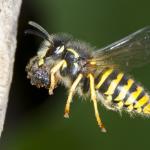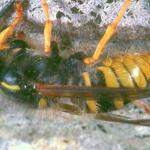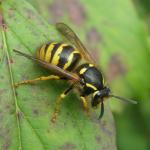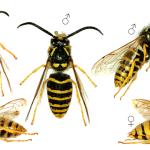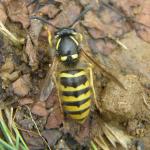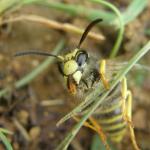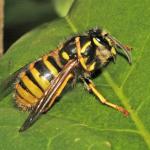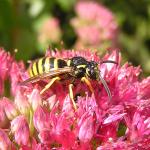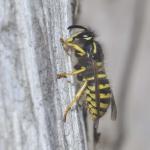Vespa anglica SMITH 1843; Vespa campanaria FOWLER 1833; Vespa frontalis LATREILLE 1802; Vespa holsatica FABRICIUS 1793; Vespa parietum HARRIS 1776; Vespa pilosella COSTA 1858; Vespa sumptuosa DE BUYSSON 1905; Vespula xinjiangensis LEE 1986
A medium sized, long-cheeked social wasp which is the most common species of the genus Dolichovespula in Britain.
The species is widespread throughout the British Isles including many of the smaller islands such as the Outer Hebrides, Isle of Man, Isles of Scilly and the Channel Islands.
Overseas, the species occurs throughout most of Europe, Morocco, and across central Asia to eastern China; it is not found in Japan (Archer 1999).
This species is not regarded as being scarce or threatened, but has declined recently, as with other social wasps.
Will utilise the majority of habitats and can often be very common in urban areas, particularly in domestic gardens.
In common with all species of Dolichovespula, D. sylvestris has a relatively short life-cycle with typical flight periods as follows: spring queens from early May to mid-June; workers from the end of May/beginning of June to the end of September; autumn queens end of July to the end of September; and males mid-July to the beginning of September (Edwards 1980).
Contrary to its common name, the Tree Wasp, nests are not always situated in trees, but tend to require at least partial cover. Many are found at ground level or even in cavities in the ground. Other typical situations are in the eaves, roof spaces and cavity walls of buildings, and small bird nest boxes. The short life-cycle means that the maximum colony size achieved during peak activity is only a few hundred individuals; nests are therefore quite small. Due to the paper being made from mostly well-seasoned wood, nests are grey with some fine white and pale brown transverse bands.
Typical of most social wasp species, individuals can often be seen in late summer at the flowers of wild parsnip, hogweed, wild carrot and fennel. In addition they also visit so-called 'wasp-flowers' such as figworts, cotoneaster, snowberry etc. and are important pollinators of common figwort, Scrophularia nodosa (Edwards 1980, Proctor et. al. 1996 and references therein).
The social parasite Dolichovespula omissa attacks D. sylvestris in Continental Europe (Weyrauch 1937), but has not yet been recorded in Britain. Other parasites are the roundworm, Pheromermis pachysoma in Britain (Welch 1958) and in Germany, the ichneumonid Sphecophaga vesparum (Schummel 1829).
2002


